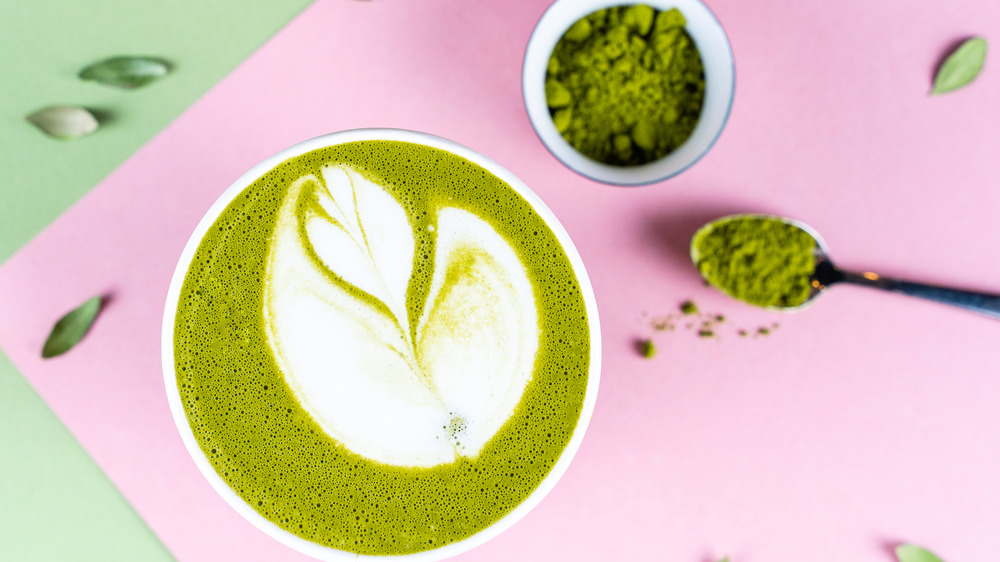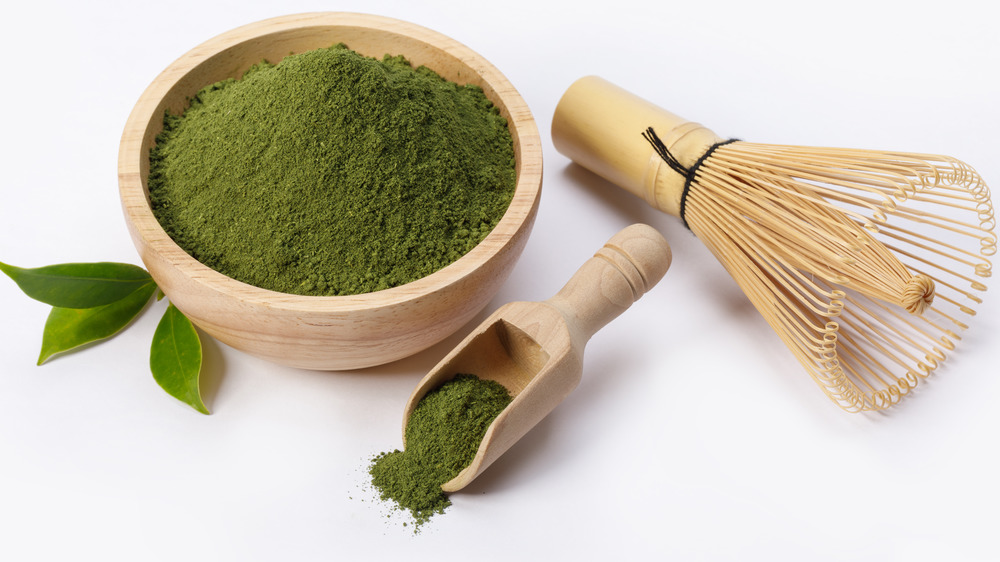Is Matcha Actually More Nutritious Than Regular Green Tea?
When reaching for a pick-me-up, matcha has become a trendy alternative to coffee and regular teas. But is the green powdered beverage a healthier choice than a cup of full-leaf, steeped green tea?
Matcha, explains Spoon University, has been a staple in Japan since the 12th century. It's a type of green tea that is made by grinding young tea leaves into a powder, which is then whisked with hot water when it's time to drink it, according to Time. This differs from a classic green tea, which relies on steeped, unground leaves. Spoon University notes that while the shrub that supplies the leaves (which hails from China and is known as Camellia sinensis) is the same for matcha and classic green tea, matcha leaves themselves are grown differently. Growers cover the matcha bushes for 20 to 30 days before harvest, protecting the chlorophyll content and resulting in the leaves' signature dark green shade and a higher level of amino acids. When the matcha is ground, notes Time, it's done in the dark to protect the nutrient value in the final product.
Matcha keeps the nutrients in your cup
It's not just the production process that ups matcha's nutrition value. Louise Cheadle, co-author of The Book of Matcha and co-owner of the tea company teapigs, explained to Time that drinking traditional, full-leaf tea "is a bit like boiling spinach, throwing away the spinach and just drinking the water. You will get some of the nutrients, but you're throwing away the best bit." Whereas drinking matcha, Spoon University points out, is consuming the whole leaf. This means intaking the most of what the drink has to offer, including antioxidants like catechins and polyphenols, as well as about three times more caffeine than other traditionally brewed teas (via Women's Health).
Spoon University notes that matcha also contains 137 times more EGCG than regular green tea, which is an antioxidant that has been said to improve heart health and support a healthy metabolism. So while good-old full-leaf green tea is indeed a source of nutrients, the outlet states it would take about 10 cups for it to match up to matcha. We guess it's really worth that sometimes steep price tag.

